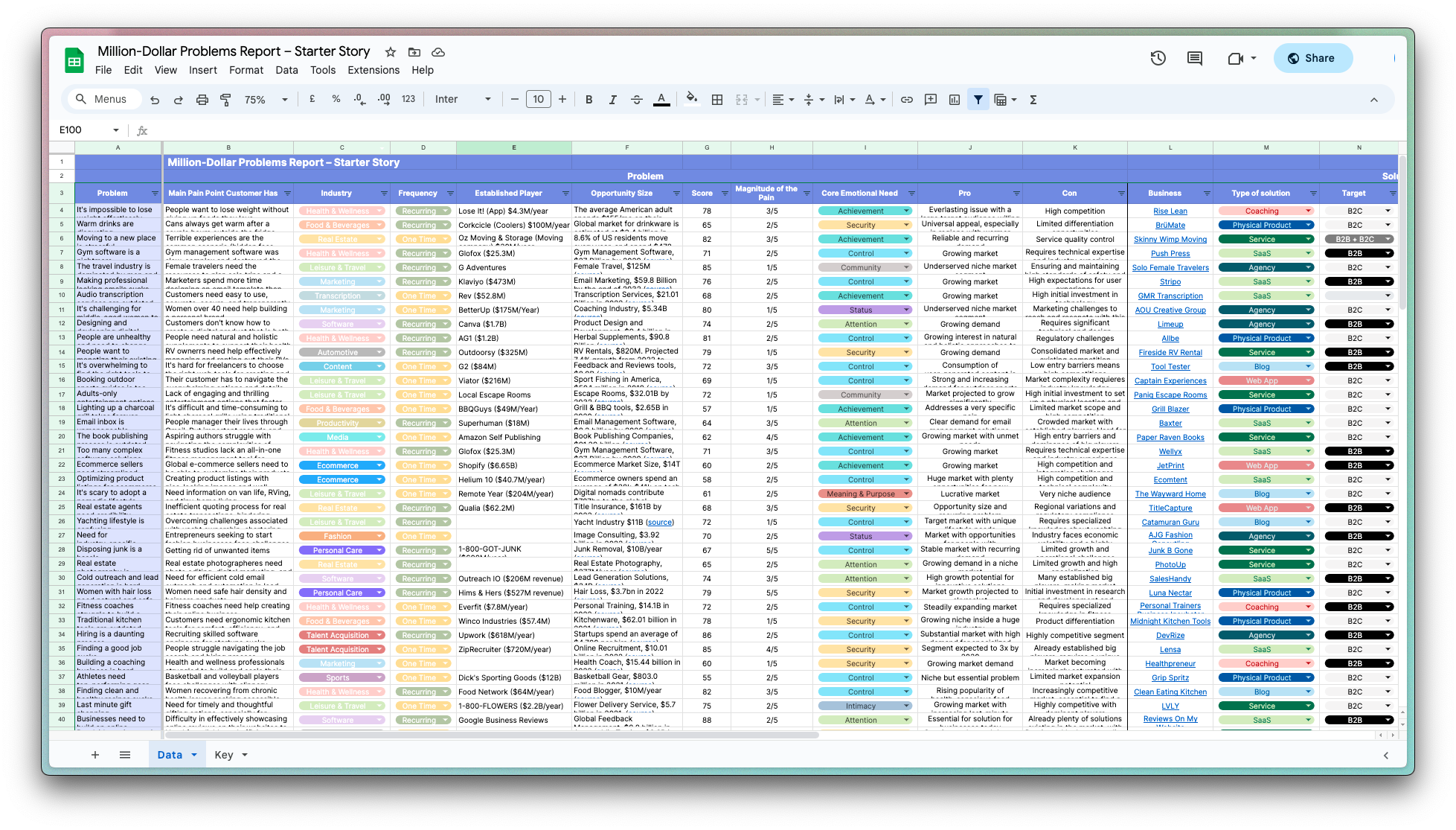|
|
|
|
$23K
monthly
|
30
days
|
—
per visitor
|
$196
to start
|
91
out of 100
|
|
|
|
|
|
|
'AI-powered instant email outreach tool'
|
|
$1.67M
monthly
|
—
days
|
$1.19
per visitor
|
—
to start
|
55
out of 100
|
|
|
|
|
|
|
AI meeting assistant for automated note-taking.
|
|
$908K
monthly
|
60
days
|
$4.17
per visitor
|
$0
to start
|
68
out of 100
|
|
|
|
|
|
|
|
|
$15.5K
monthly
|
—
days
|
$0.05
per visitor
|
—
to start
|
70
out of 100
|
|
|
|
|
|
|
|
|
$20K
monthly
|
—
days
|
—
per visitor
|
$0
to start
|
92
out of 100
|
|
|
|
|
|
|
|
|
$30K
monthly
|
90
days
|
$15.00
per visitor
|
$9K
to start
|
73
out of 100
|
|
|
|
|
|
|
|
|
$1M
monthly
|
20
days
|
$0.20
per visitor
|
$20K
to start
|
59
out of 100
|
|
|
|
|
|
|
AI quiz generator for educators.
|
|
$4K
monthly
|
90
days
|
$0.27
per visitor
|
$500
to start
|
90
out of 100
|
|
|
|
|
|
|
|
|
$274K
monthly
|
1170
days
|
$1.78
per visitor
|
$65.4K
to start
|
51
out of 100
|
|
|
|
|
|
|
AI customer support agents for SaaS businesses.
|
|
$25K
monthly
|
14
days
|
$0.50
per visitor
|
$99
to start
|
83
out of 100
|
|
|
|
|
|
|
AI-powered image and video creation platform.
|
|
$11.5K
monthly
|
14
days
|
$0.08
per visitor
|
$500
to start
|
92
out of 100
|
|
|
|
|
|
|
|
|
$15K
monthly
|
30
days
|
$1.00
per visitor
|
$0
to start
|
83
out of 100
|
|
|
|
|
|
|
|
|
$9K
monthly
|
6
days
|
$0.90
per visitor
|
$0
to start
|
91
out of 100
|
|
|
|
|
|
|
AI marketing tools for Solopreneurs.
|
|
—
monthly
|
30
days
|
—
per visitor
|
$100
to start
|
83
out of 100
|
|
|
|
|
|
|
|
|
$6K
monthly
|
—
days
|
—
per visitor
|
—
to start
|
65
out of 100
|
|
|
|
|
|
|
"Zero-code analytics for SaaS platforms."
|
|
$225K
monthly
|
—
days
|
—
per visitor
|
—
to start
|
54
out of 100
|
|
|
|
|
|
|
|
|
$7.96K
monthly
|
189
days
|
—
per visitor
|
—
to start
|
55
out of 100
|
|
|
|
|
|
|
|
|
$17K
monthly
|
40
days
|
—
per visitor
|
$500
to start
|
91
out of 100
|
|
|
|
|
|
|
AI chatbot trained on your website content.
|
|
$20.8K
monthly
|
15
days
|
—
per visitor
|
$500
to start
|
87
out of 100
|
|
|
|
|
|
|
|
|
$100K
monthly
|
31
days
|
—
per visitor
|
$0
to start
|
52
out of 100
|
|
|
|
|
|
|
|
|
$858K
monthly
|
60
days
|
—
per visitor
|
$100K
to start
|
39
out of 100
|
|
|
|
|
|
|
|
|
$40K
monthly
|
120
days
|
—
per visitor
|
$10K
to start
|
64
out of 100
|
|
|
|
|
|
|
|
|
$4K
monthly
|
35
days
|
—
per visitor
|
$200
to start
|
95
out of 100
|
|
|
|
|
|
|
AI-powered business idea and content generator.
|
|
$30K
monthly
|
60
days
|
$0.25
per visitor
|
—
to start
|
85
out of 100
|
|
|
|
|
























